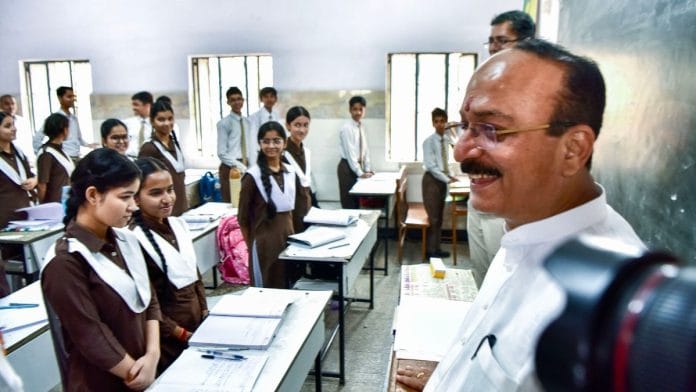New Delhi: In an attempt to transform Delhi’s public education sector, the Delhi government has announced admissions to its recently launched CM Shri schools. The admissions for classes 6 to 8 will take place through the CM Shri Schools Admission Tests across 33 of the 75 selected institutions.
The upcoming test will be held on 30 August and will assess students through a bilingual, OMR (optical marked recognition) format, covering five key subjects including Hindi, English, General Awareness, Mental Ability and Numerical Aptitude.
The application window has opened on Wednesday and will close on 15 August. Admit cards will be available from 23 August, and the final list of selected students will be published on 10 September, with admissions completed by 15 September. Amid all the preparations, the government is expected to inaugurate the first batch by mid-September.
Under the programme, the CM Shri schools will have the autonomy to ensure a merit-based, transparent selection process to create high-quality schools that align with the National Education Policy 2020.
CM Shri schools are part of the Delhi government’s programme to make public education more accessible, equitable and future-ready. The schools were announced in the 2025-26 state budget with a dedicated allocation of Rs 100 crore.
Taking inspiration from the Centre’s PM Shri schools, as per reports, these schools are based on the vision of creating “model” institutions that can showcase the best of technology, sustainability, and pedagogy rooted in the National Education Policy.
To make the admission process equitable for students from all classes of society, 50 percent of the seats will be reserved for students from government or government-aided schools including those under the Directorate of Education, MCD, NDMC, Kendriya Vidyalayas and Navodaya Vidyalayas. Further, students from marginalised communities such as SC, ST, OBC (non-creamy layer) and CWSN (Children With Special Needs) will receive a 5 percent relaxation in the eligibility criteria. Moreover, the duration will be 150 minutes, with additional time given to CWSN.
Also read: Delhi govt schools abandon struggling students to inflate success rates. Many are dropping out
Purpose of CM Shri schools
At the heart of CM Shri schools is a commitment to building learning environments that are not just functional, but aspirational. Every CM Shri school will feature cutting-edge infrastructure, including AI-powered libraries, smart classrooms integrated with augmented and virtual reality tools, interactive smartboards, biometric attendance systems, and dedicated robotics labs, with an aim to provide hands-on learning and to expose students to future-facing disciplines from an early age.
Earlier this year, on completion of her government’s 100 days, Delhi Chief Minister Rekha Gupta announced that at least 75 new CM Shri schools will be opened in Delhi this year. “It is the right time that government schools become the first choice for parents,” she had said.
The schools, as per reports, will function within zero-waste and on solar power, integrating environmental consciousness into everyday schooling.
The curriculum of these schools is aligned with the NEP 2020 and the recently announced National Curriculum Framework 2023, promoting an experiential, inquiry-based approach over rote learning.
With the phasing out of the Delhi Board of School Education, these schools will now be affiliated with the Central Board of Secondary Education to ensure alignment with national academic standards and evaluation.
To achieve the purpose of these schools, the Delhi government will also recruit educators, conducting interface sessions and orientation programmes focused on digital fluency, open-source content, and interactive teaching methodologies.
(Edited by Viny Mishra)






